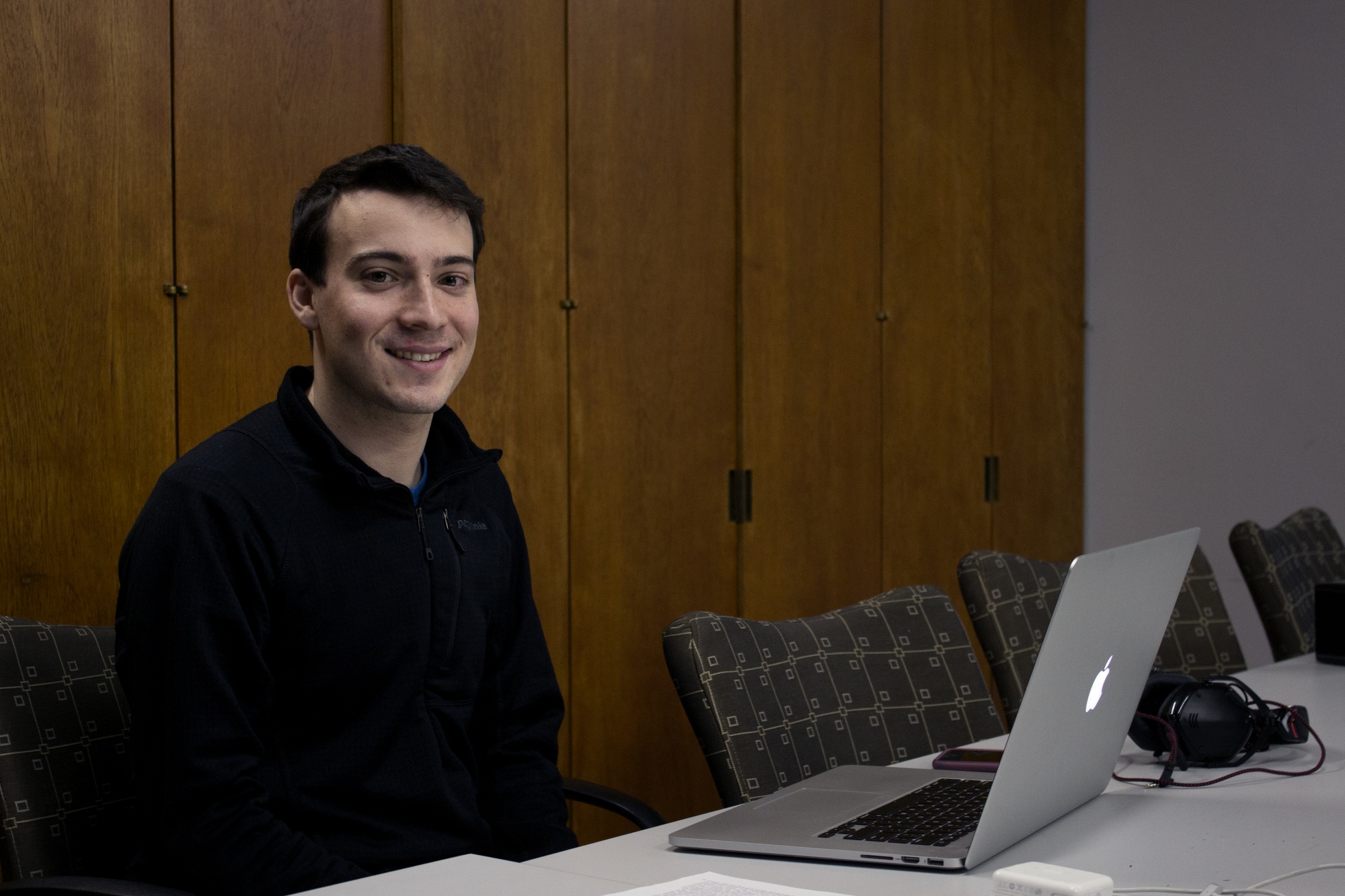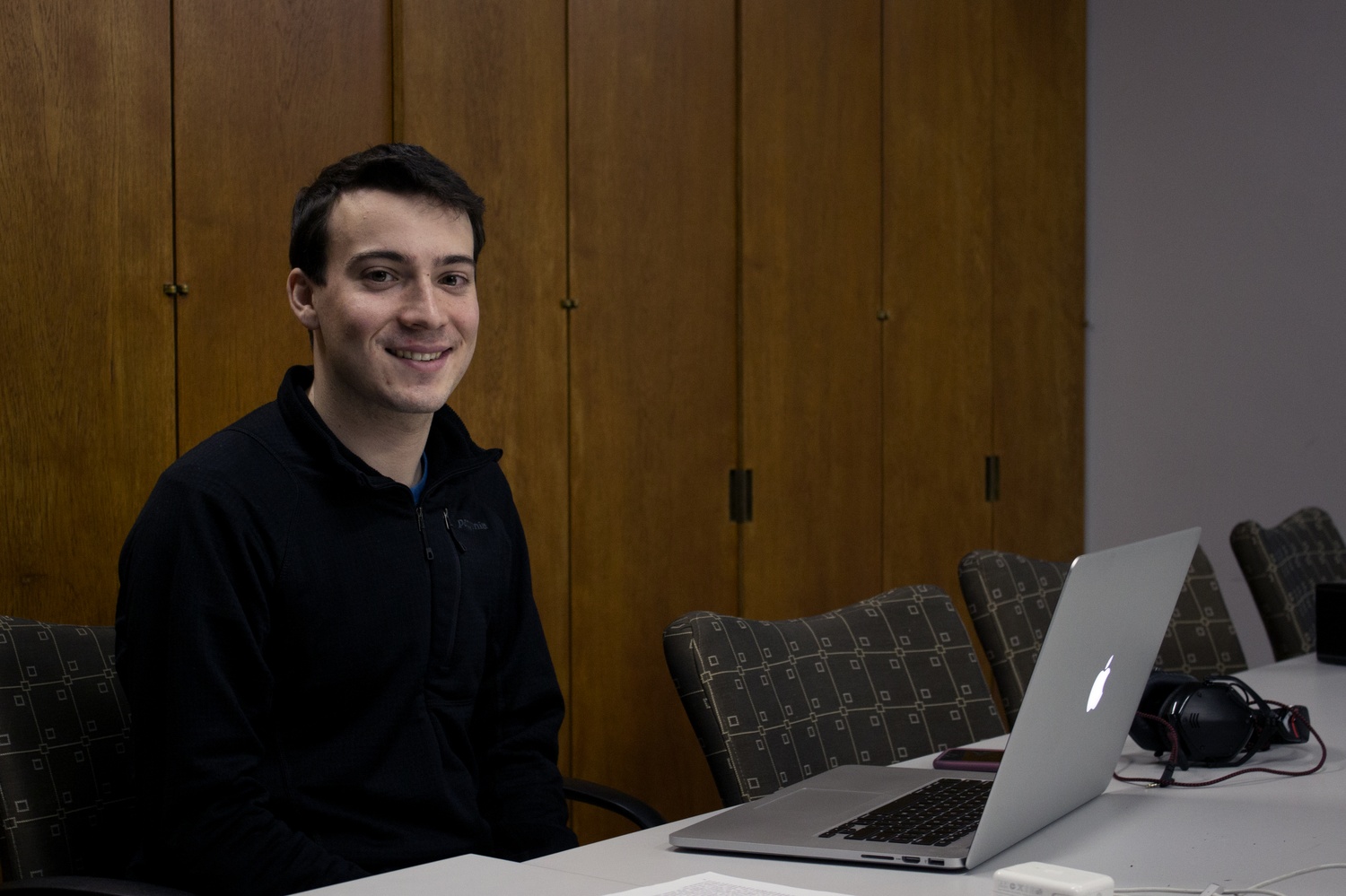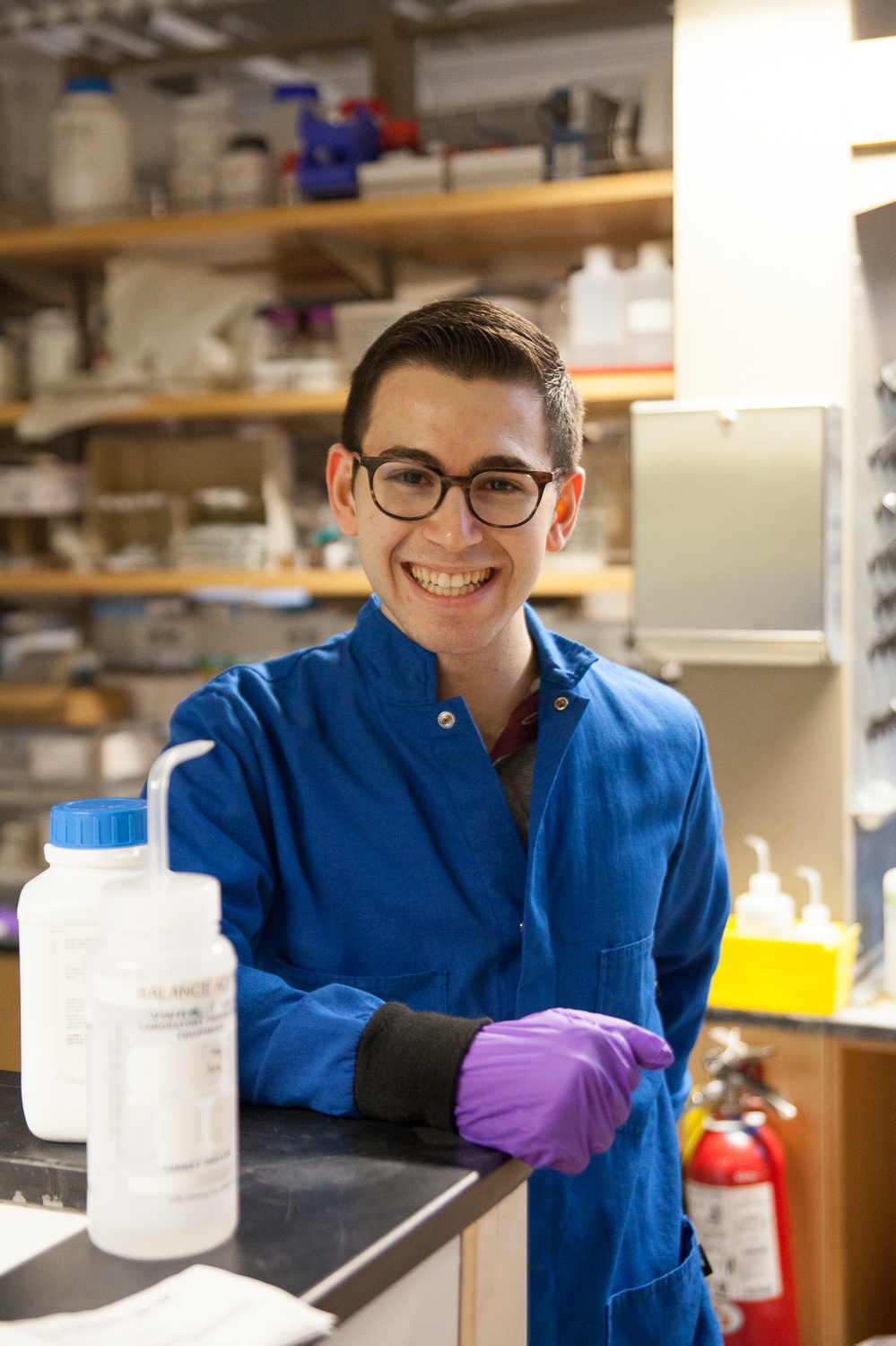The Social Science
About a quarter of Intel Science Talent Search finalists from the past five years attended or are currently attending Harvard College.
When Zarin I. Rahman ’18 arrived on campus, she already had a comfortable set of friends. But she hadn’t met them at a prep school that regularly sends students to Harvard or at meet-ups in a major metropolitan area.
Instead, Rahman, who hails from Brookings, S.D., had spent time in high school doing research and competing in a nationwide science program that provides an alternative pipeline to Ivy League schools: the Intel Science Talent Search, which will be called the Regeneron Science Talent Search starting in 2017.
Along with 39 other finalists in the Intel competition, Rahman spent a week in Washington, D.C. during her senior year of high school competing with other students, some of whom were on their way to Harvard. Rahman, who studies neurobiology, said the program helped the transition from a state that sends relatively few students to Harvard each year.
“I mean I come from a small high school, a small town, this is a big city, a big school, so I was nervous,” she said.
Rahman’s experience is not atypical. About a quarter of finalists from the past five years attended or are currently attending Harvard College, according to a Crimson analysis. Because of the high number of students who are finalists in the competition and who attend the College, Intel finalists enjoy a head-start socially.
But the benefits do not stop there. In addition to the social connections, Intel finalists also win money that they often put towards tuition, and gain access to an extensive network of alumni.
MONEY MATTERS
Before these students can call themselves Intel finalists, they spend months—and sometimes years—conducting intensive scientific research.
Jonah M. Kallenbach ’17, who in 2013 finished second place in the national competition and won $75,000, started his research project, which tried to predict interactions between disordered proteins, at a summer program he attended after 10th grade.

“I went to this summer research program, called the Research Science Institute, which is over at MIT,” Kallenbach said. “I was working with a [Principal Investigator] at Harvard Medical School, Gil Alterovitz, and we did this research together, which basically characterized when disordered proteins will interact with other proteins.”
From more than 1,700 applications, the Intel program picks 300 semi-finalists every year. Judges, who hold Ph.D.s in areas of science, prioritize the students’ research, while also considering applicants’ general academic performance. These 300 semi-finalists each win $2,000, and the competition grants their individual schools the same amount of money for STEM education.
From there, judges then select the 40 finalists to compete in a week-long, all-expenses paid trip to Washington, D.C. It is here where most finalists get to know each other before college.
All finalists receive at least $7,500, and the top three finalists last year each received $150,000. All together, the competition distributes more than $1 million every year. The grants, which are considered taxable income, can be used for anything.
Many students at Harvard say they use their monetary prizes to pay their tuition. In addition to the financial incentive, students say their interest in the topic fuels their research.
Some students, like Kelly X. Zhang ’17, draw inspiration from their personal lives. Zhang’s project was inspired by her friend’s father, who passed away from cancer.
“My project was related to cancer imaging. So the main problem that we were seeing is that a lot of times when cancer patients get surgeries, even after surgery, sometimes some cancer cells remain in the body and they spread,” Zhang said. “And so this actually happened to one of my close friend’s dad, and even after he got surgery, he like a couple years later passed away from cancer. And I was kind of wondering… why did that happen?”
Other students say they want to pursue their research to address global problems. When asked to explain his project, Joshua A. Meier ’18, who worked on trying to harness the aging process in order to stop cancer cells, said he sees his project as part of a broader goal.

“It’s just my goal to, you know, try to make the world a better place,” he said.
SOCIAL BENEFITS
Once they arrive in Washington D.C., the finalists spend a week competing with each other for national recognition, meeting with leading scientists, and attending social events.
“We had a lot of free time at the hotel, too,”said Claire B. Burch ’20. “There was only 40 of us, right, so we got to know everyone else like pretty well by the end of the week.”
Once students arrive on campus, the relationships they forge during the program often extend into freshman fall. Kallenbach remembers how much easier it was to get to know classmates thanks to the competition.
“It was nice to have a group of people that I knew,” he said. “It was definitely easier to make the transition, having some familiar faces around campus who I could talk to… I ended up in a lot of classes with people who were at Intel with me, so it was really nice to have people to p-set with and stuff like that.”
Despite the large number of students from Intel at Harvard, the program has no formal relationship with the admissions department, according to Caitlin Sullivan, the director of outreach and equity at the Society for Science and the Public. But she said the program does send out information about the semi-finalists and finalists to colleges across the country.
“We send them an announcement to offices of admissions every year about the semifinalist announcement, which is now called the Top 300 Scholars,” she said. “So there’s no way for us to guarantee every office of admissions in every college in the country sees it or that necessarily that the admissions officers open it, but we do what we can to get that word out.”
This is one of the benefits of the being a finalist in the competition, Sullivan said.
“We have an alumni department. We have two people who work in it; at this point it’s fairly new. We have alumni events across the country, sometimes at universities,” she said. “And then there are some alumni Facebook pages where students can keep in touch with students from their class or also connect with folks who are previous finalists.”
Students at Harvard who participated in the program said the Intel alumni community can be helpful. Meier now works with Feng Zhang, a scientist at the Broad Institute who finished in third place in 2000. Although they weren’t connected directly through Intel STS, Meier believes the shared experience enhances their working relationship.
“The Intel community is very tight. Both within our own year, and then with alumni, as well,” Meier, who finished in fourth place in 2014, said.
CONTINUING WITH THE SCIENCES
Once Intel finalists get to college, it’s up to them whether or not they continue their projects and scientific pursuits. Several students said they stopped working on their projects once they came to campus. For many students, science still remains a priority.
“I am still involved in the sciences. I’m doing research right now with a professor, more on the computer science side of things,” Kallenbach said.
Kallenbach explained why most Intel STS finalists quit pursuing their projects once on campus.
“I think for a lot of people, the projects they were working on at Intel were specific to a lab in their hometown or to a particular person they worked with, who is probably not in Cambridge. So most people that I know, the vast majority, have not continued their projects,” he said.
Hannah K. Larson ’17, whose project involved fusion categories and was published in Journal of Algebra, said she remains interested in mathematical research, though she’s not working on the same exact material.
“The kind of math that I’m doing now is kind of a different area of math. I’m now doing research in algebraic geometry,” she said.
Zhang, who published her project in the Journal of Experimental Secondary Science, said she is still interested in the sciences, but she was interested in pursuing a different aspect than her project.
“I’m in HDRB, which is Human Developmental and Regenerative Biology. So I kept along the biology thing, but I kind of tried like wanted to try a different aspect of it. I’m doing more like research with stem cells and stuff now,” she said.
Larson explained that it’s common for Intel STS students to continue their interest the sciences, even if they forgo their projects.
“The people that I have kept in touch with from my year are concentrating in science or math or like computer science,” she said.
While they may not continue their projects, students say the friendships and scientific interests developed at Intel STS impact their entire college careers.
“Definitely for me, it’s still a group of friendly faces and a group of people who I wouldn’t have necessarily gotten to know through any other means, who I enjoy seeing around campus,” Kallenbach said.
